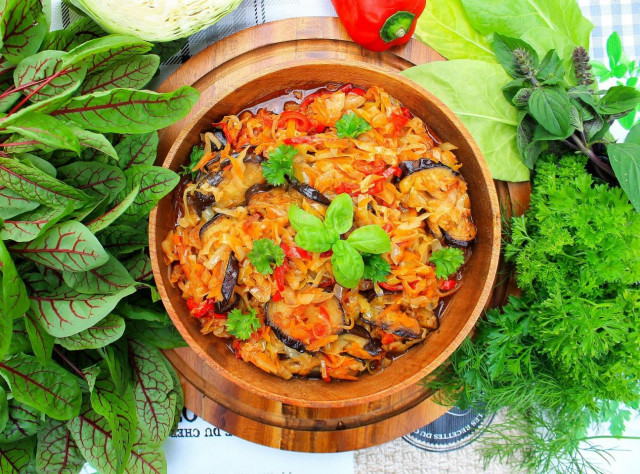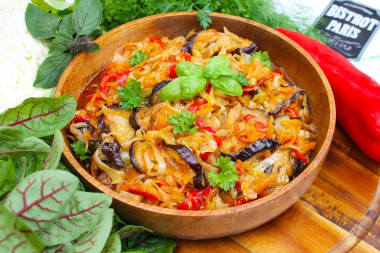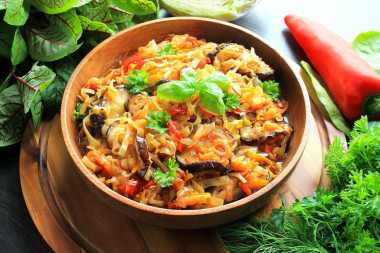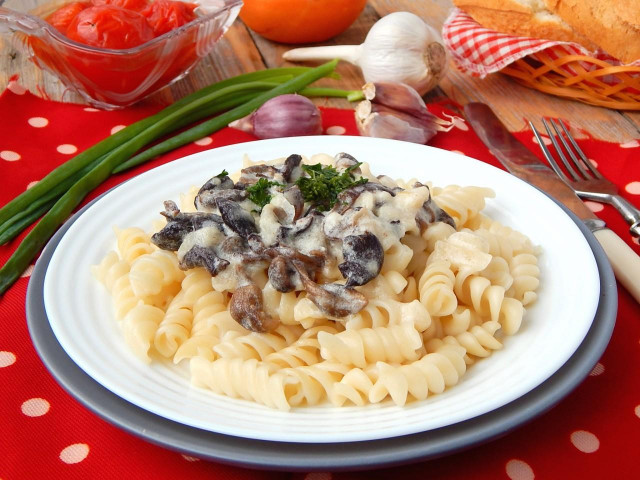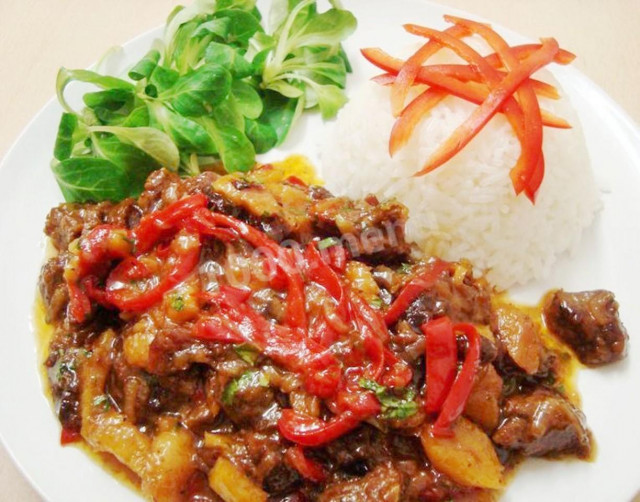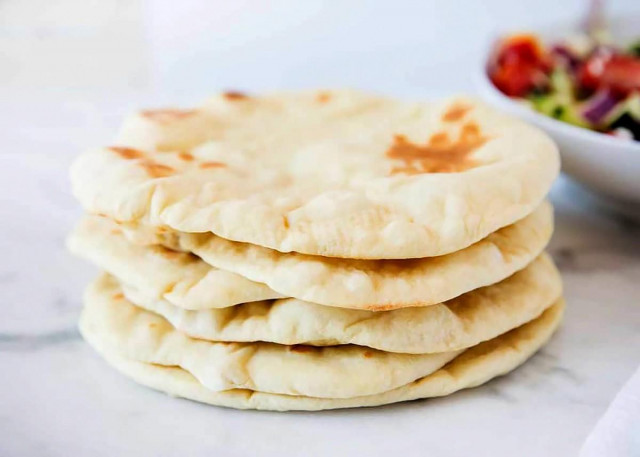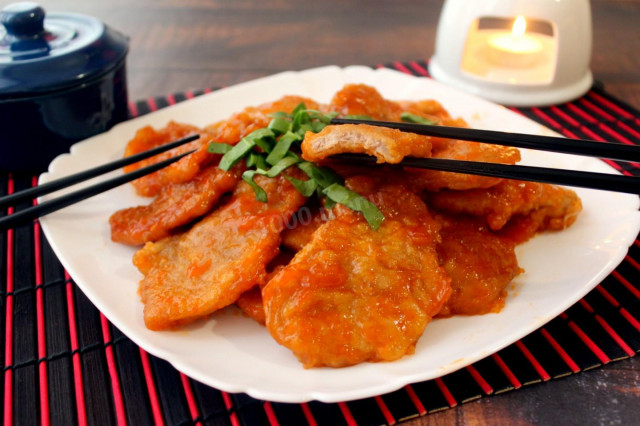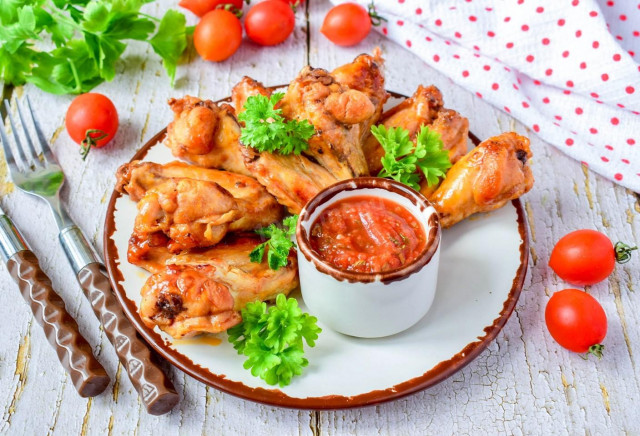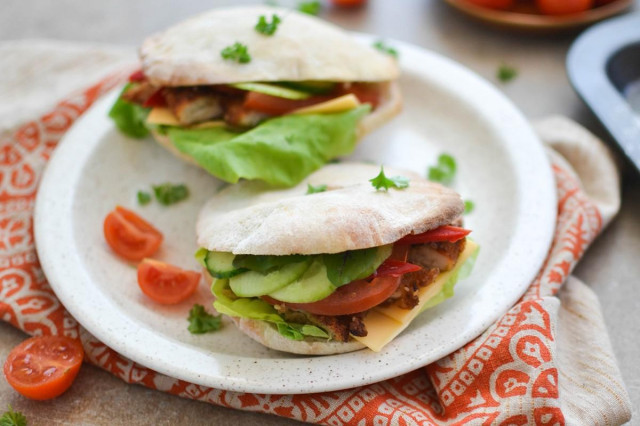Composition / ingredients
Step-by-step cooking
Step 1:
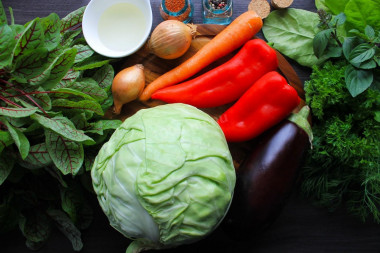
How to put out eggplant, cabbage, bell pepper? Prepare all the necessary products that are stated in the recipe. It is better to take a young cabbage, if you use a more mature head, then the cooking time will increase slightly.
Step 2:
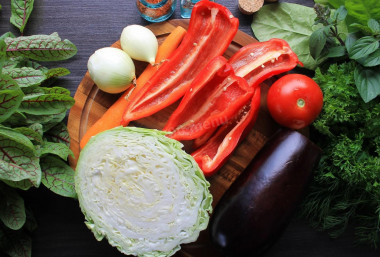
Remove the outer sheets from the cabbage, they are usually hard or spoiled. Peel the onion and carrot. Wash all the vegetables well and dry them with paper napkins or a kitchen towel. Cut the peppers in half and remove the seeds with the core.
Step 3:
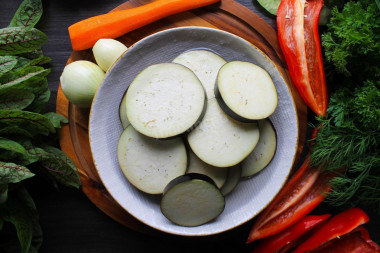
Cut the eggplant into circles about 1.5 cm thick. Sprinkle the blue ones with a small amount of salt and pour cold water for 15-20 minutes. This is necessary first of all in order to remove the bitterness from the eggplant. There are varieties that are not bitter, but in this case it is worth pouring the circles with water, then the eggplants will absorb less oil when frying.
Step 4:
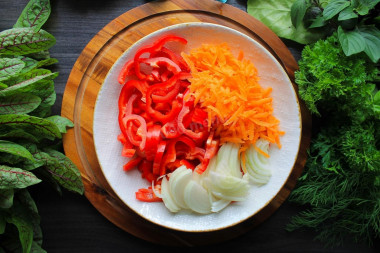
At this time, prepare the rest of the vegetables. Cut onion and bell pepper into thin half rings. Grate the carrots on a coarse grater or on a vegetable cutter for Korean salads.
Step 5:
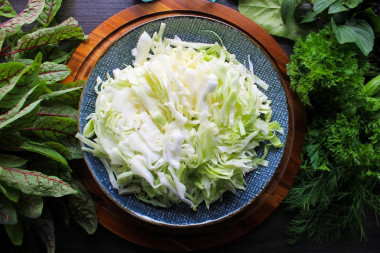
Chop the cabbage into thin strips.
Step 6:
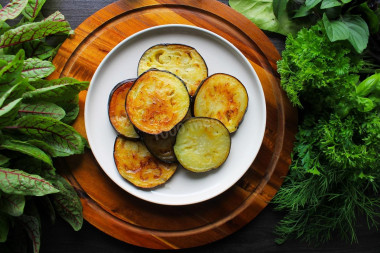
Drain the liquid from the eggplant and lightly squeeze the circles. Heat a small amount of refined vegetable oil in a frying pan. Fry the eggplant on both sides until golden brown. Put the blue ones on paper napkins to get rid of excess fat.
Step 7:
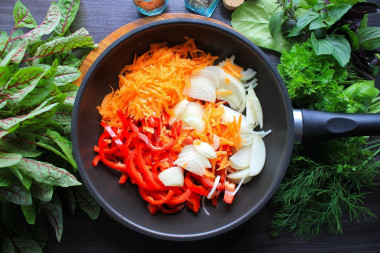
Pour about 3-4 tablespoons of vegetable oil into the frying pan. Send the onion, carrot and pepper to fry. Cook over high heat, stirring, for about 5-8 minutes.
Step 8:
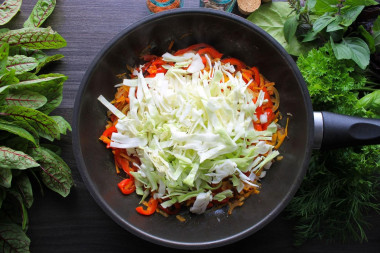
Send the cabbage to roast. Also stirring, cook for about 5 minutes.
Step 9:
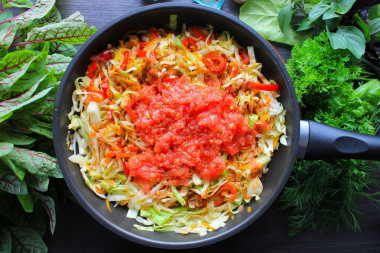
Cut tomatoes in half and grate on a coarse grater. Send them to the frying pan. Add salt to taste, add ground peppers and your favorite dry spices.
Step 10:
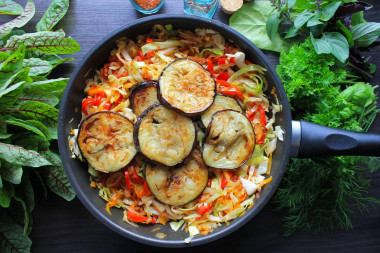
Add fried eggplants to all products. Mix everything very carefully, cover with a lid and simmer for about 30 minutes.
Step 11:
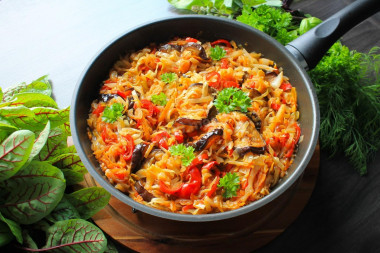
Try the finished dish with salt, add salt if necessary. Sprinkle the stew with finely chopped herbs and serve to the table!
Very tasty in hot, as well as cold.
Bon appetit!
Use oil with a high smoking temperature for frying! Any oils are useful only until a certain temperature is reached - the point of smoking, at which the oil begins to burn and toxic substances, including carcinogens, are formed in it.
Unrefined oils, with rare exceptions, have a low smoking point. There are a lot of unfiltered organic particles in them, which quickly begin to burn.
Refined oils are more resistant to heating, and their smoking point is higher. If you are going to cook food in the oven, on a frying pan or grill, make sure that you use oil with a high smoking point. The most common of the oils with a high smoking point: refined varieties of sunflower, olive and grape.
Since the degree of salinity, sweetness, bitterness, sharpness, acid, burning is individual for everyone, always add spices, spices and seasonings, focusing on your taste! If you put some of the seasonings for the first time, then keep in mind that there are spices that it is especially important not to shift (for example, chili pepper).
Important! An incorrectly selected frying pan can ruin even the best recipe. All the details on how to choose the perfect frying pan for different dishes read here .
Caloric content of the products possible in the composition of the dish
- Onion - 41 kcal/100g
- Green cabbage - 46 kcal/100g
- Fresh frozen green cabbage in a package - 45 kcal/100g
- Tomatoes - 23 kcal/100g
- Sweet pepper - 27 kcal/100g
- Carrots - 33 kcal/100g
- Dried carrots - 275 kcal/100g
- Boiled carrots - 25 kcal/100g
- Eggplant - 24 kcal/100g
- Ground black pepper - 255 kcal/100g
- Vegetable oil - 873 kcal/100g
- Salt - 0 kcal/100g

